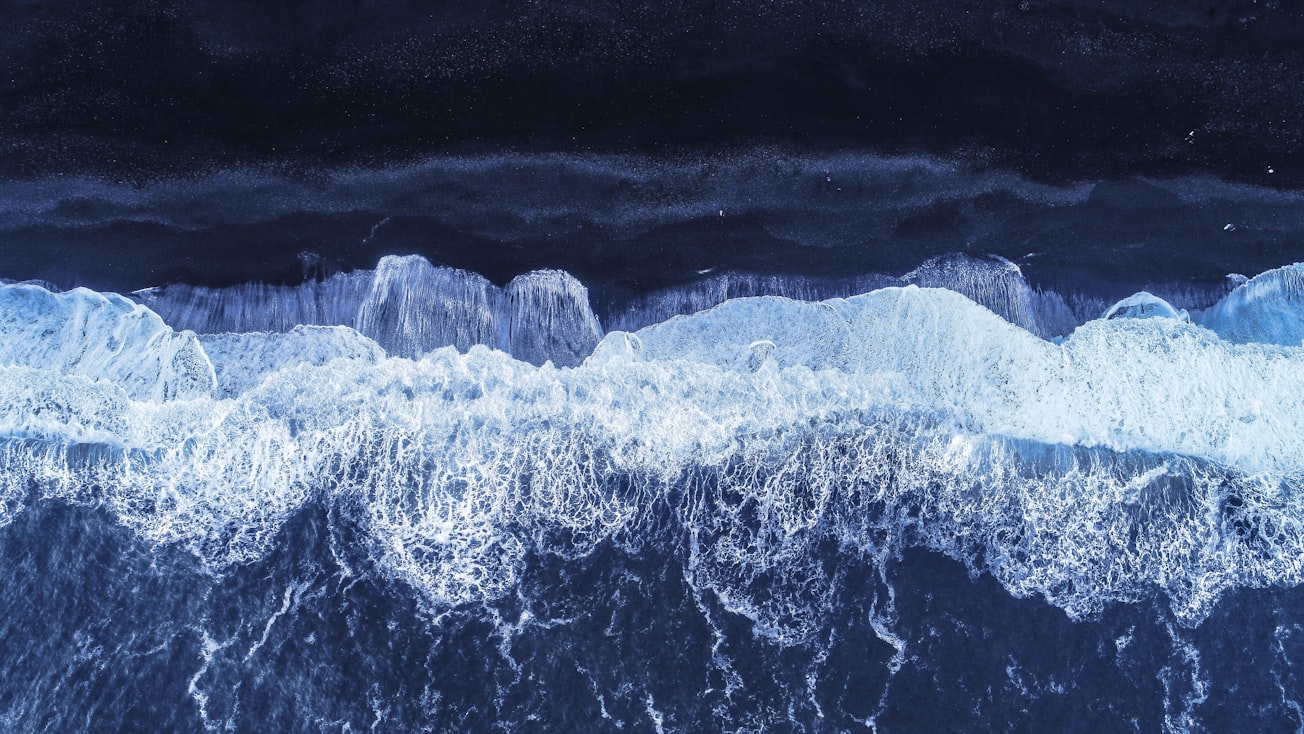What is it about?
We most commonly experience waves as wind waves (the kind that you see at the beach). These are waves which form on the interface between the ocean (water) and the atmosphere (air). But there are other interfaces internal to the ocean, between less dense water at the surface (which is usually warm) and more dense water at depth (which is usually cold). On these interfaces, waves up to 300m high can form, we call these waves Internal Waves. As Internal Waves propagate over gentle slopes, they transform in a way that brings deep water to shallower depths, and with it, associated properties such as high nutrient content, and cold temperatures. In this paper, we wanted to understand how these pulses of cold fluid (here we named them dense pulses) transport this fluid upslope for different types of stratification using numerical models at the laboratory scale.
Featured Image

Photo by Balazs Busznyak on Unsplash
Why is it important?
Pulses formed by the propagation of these internal waves, bring deep, dense water from depth to shallower waters. These shallow waters are those that typically contain more life, including coral reef ecosystems and kelp forests, but are nutrient deprived, whilst high in light. In contrast, deeper waters are typically warmer and contain nutrients, so bringing these waters to the life-rich shallow waters can provide both nutrients, and cold waters that provide brief respite during heat waves. There have been numerous field observations of these processes, but by using highly idealised numerical models, we can get a full picture of these waves with in space and time across the entire evolution of the wave and the pulses formed. We hope these models can help to identify what processes are going on in a manner that can be applied to the field.
Perspectives
Coming from a background of both marine biology and oceanography, I'm keen to understand the physical processes that impact biology in the ocean. This paper came along as an opportunity to contribute to a Special Issue in honour of Peter A Davies, and to build our last paper (https://doi.org/10.1017/jfm.2021.1049) to improve its applicability to the field and understanding of how these interact with the local biological processes.
Samuel Hartharn-Evans
Newcastle University
Read the Original
This page is a summary of: Dense pulses formed from fissioning internal waves, Environmental Fluid Mechanics, September 2022, Springer Science + Business Media,
DOI: 10.1007/s10652-022-09894-x.
You can read the full text:
Resources
Contributors
The following have contributed to this page







